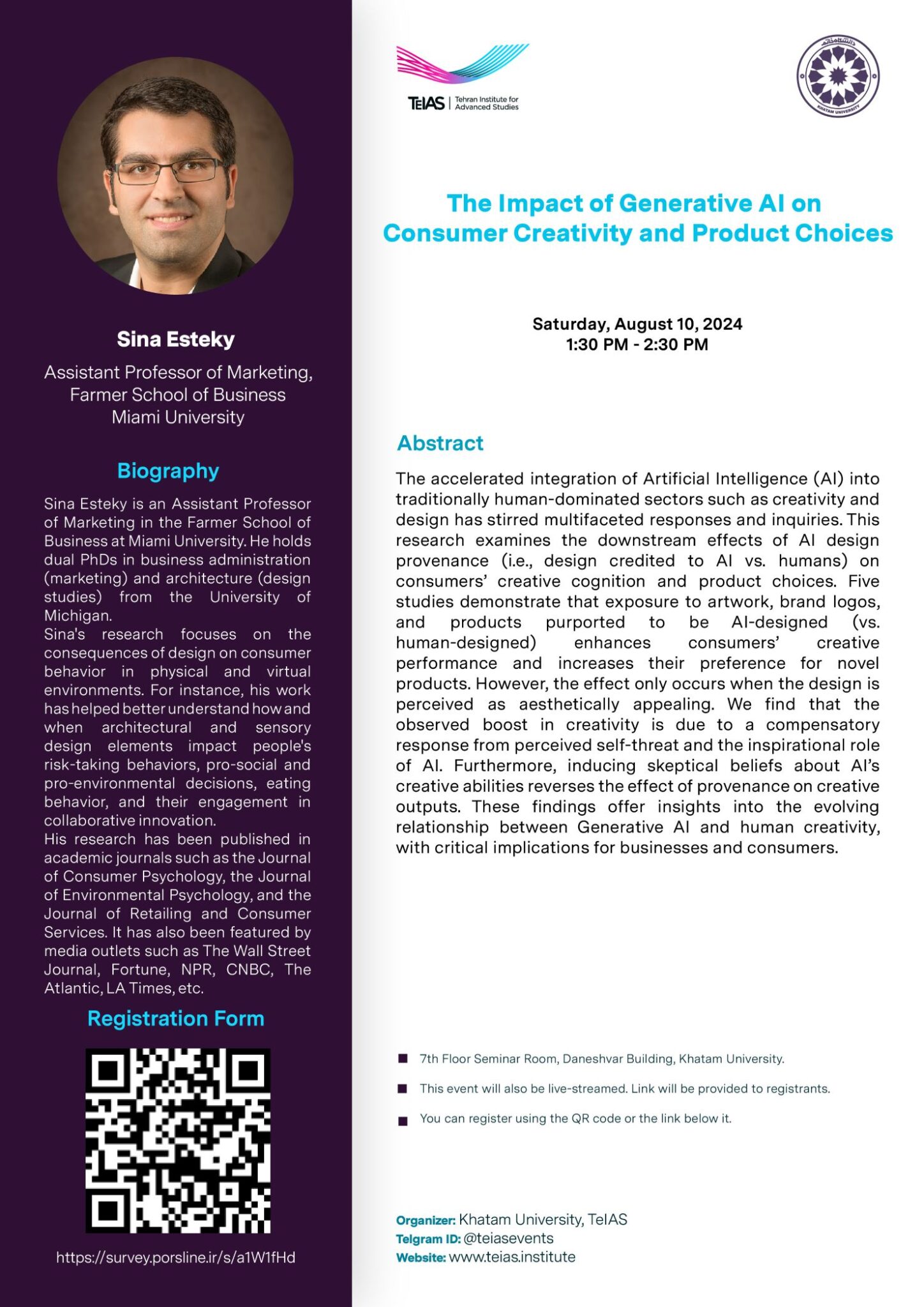
Sina Esteky is an Assistant Professor of Marketing in the Farmer School of Business at Miami University. He holds dual PhDs in business administration (marketing) and architecture (design studies) from the University of Michigan. Sina’s research focuses on the consequences of design on consumer behavior in physical and virtual environments. For instance, his work has helped better understand how and when architectural and sensory design elements impact people’s risk-taking behaviors, pro-social and pro-environmental decisions, eating behavior, and their engagement in collaborative innovation. His research has been published in academic journals such as the Journal of Consumer Psychology, the Journal of Environmental Psychology, and the Journal of Retailing and Consumer Services. It has also been featured by media outlets such as The Wall Street Journal, Fortune, NPR, CNBC, The Atlantic, LA Times, etc. Registration For

